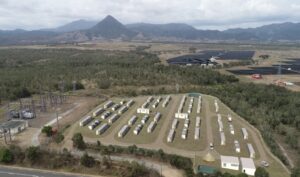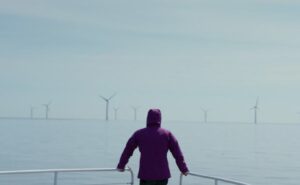
The Coalition government launched a ferocious attack against wind and solar energy after the major South Australian blackout, even though energy minister Josh Frydenberg and the grid operators admit that the source of energy had nothing to do with catastrophic outage.
Frydenberg, however, lined up with prime minister Malcolm Turnbull, deputy prime minister Barnaby Joyce, One Nation’s Malcolm Roberts, independent Senator Nick Xenophon and a host of conservative commentators, including Andrew Bolt, Alan Moran, the ABC’s Chris Ullmann, and Fairfax’ Brian Robins to exploit the blackout to question the use of renewable energy.
Frydenberg used the blackout to continue his persistent campaign against the renewable energy targets of state Labor governments in South Australia, Victoria and Queensland, saying that the blackout was proof that these targets were “unrealistic.”
He made clear that he wanted the states – South Australia and Queensland which are pushing for 50 per cent renewable energy, and Victoria 40 per cent – to abandon their schemes and conform to the federal target, which has target of about 23.5 per cent renewables.
The federal scheme effectively ends in 2020, while the state based schemes provide longer term investment signals by providing a 2025 and 2030 timeframes.
“These states are pursuing these unrealistic targets ,” Frydenberg told ABC’s AM program. “My job is to try and get these states to the table … only the Commonwealth, with 23.5%, is a realistic target.”
His comments were later repeated by Turnbull, who accused state Labor governments for imposing “ideological” renewable energy targets, describing the South Australian blackout as a “wake-up call” to focus on energy security.
(It should be noted that South Australia’s wind fleet was built via the federal target, which is a bipartisan policy between the Coalition and Labor. It has a state target, but it is aspirational only, it has no particular state measures).

Electranet, which runs the grid in South Australia, and other grid authorities have made clear that the blackout – which is unprecendted in Australia and led to its first ever “black start” – would have happened whatever the fuel source at the time.
Bruce Mountain goes into detail on what was happening in this analysis here. But it is now clear that 23 high voltage power poles were lost in five different locations, bringing down three of the big four transmission lines that carry electricity to and from the north of the state, sparking a state-wide outage and its isolation from Victoria.
“South Australia gets more of its energy from renewables, more than 40% from wind,” Frydenberg said. “There are questions with renewable energy, particularly because it is intermittent.”
His Coalition partner, agriculture minister and deputy prime minister Joyce, reprised his long crusade agains wind energy, saying wind power “doesn’t work when their is excessive wind and it wasn’t working too well last night because there was a blackout.” Neither were the gas generators, minister.
His views were echoed by the likes of Roberts, Xenophon, the fossil fuel lobby, the South Australian opposition, and even ABC commentator Chris Uhlmann, who agreed with Joyce that the wind farms were not working because the wind was blowing too hard. A column by Fairfax’s Brian Robins, also blaming renewables, was dismissed as “absolute garbage” by the head of the Clean Energy Council.
The Coalition’s attacks were predictable. They occurred last November when a smaller blackout was caused by another transmission fault but was again blamed on wind, and are part of an ongoing campaign against renewables that has now turned its focus to state based initiatives.
Curiously, no such allegations were raised when West Australia experienced a major black out last week, when 130,000 customers lost power for more than an hour when a gas fired generator tripped, or when more than 200,000 people were left without power for more than a week in coal-reliant New South Wales last year after more storm damage to poles and wires.
“South Australia gets more of its energy from renewables, more than 40% from wind,” Frydenberg said. “There are questions with renewable energy, particularly because it is intermittent.”
He then had the hide, like Turnbull, to say: “We have to put aside partisanship and ideologocial approach to emission reductions.” This from a party that has scrapped the carbon price, tried to demolish the Climate Change Authority, the Clean Energy Finance Corporation, and the Australian Renewable Energy Agency, and still has no policies to meet its Paris climate targets.
Frydenberg then also questioned the cost of wind and solar, saying they could cost up to $100/MWh, while coal fired generation only cost $50/MWh and gas fired generation was $80/MWh.
His comments appear to ignore the falling cost of renewable technologies, and the rising cost of gas. The latest wind farms in South Australia will be built at a cost of $77/MWh, and that price is fixed for 20 years. (It translates into a current price in the high $50/MWh).
Solar is also coming down in cost. Contracts were written in the recent ARENA action for around $90/MWh, and as the supply chain grows and module costs come down quickly, they will soon be much cheaper than gas-fired generation.
It is also stunning that Frydenberg is making such comparisons when he knows that these are assets that last 25-30 years, and that much of Australia’s existing generation will need to replaced in coming decades.
And it is not clear that gas plants are cheaper than wind and solar. The rising cost of gas means that many gas fired plants won’t switch on for less than $100/MWh, and some peaking plants won’t be bid at less than $200/MWh. South Australia’s long term reliance on gas has long been the cause of its high prices.
It could be that the unprecedented nature of the outage, combined with similar storm outages in NSW and Queensland during the 2011 floods, could lead to a focus on a more “climate resilient” grid, which would mean more local generation and micro-grids. This has been the main focus of policy in the US, for instance, after Hurricane Sandy.
There was applause, however, about the ability of the grid operator to restore power so quickly. “Black starts” – where the grid has to start all over – have never been attempted before, energy sources said, and are tricky because as each generator comes back into production, it has to be matched to demand to avoid another trip.
Within 12 hours, almost all of the state was back on line, although the worst affected, including the Eyre Peninsula, may be without power for days because of the huge scale of the infrastructure damage.
The renewable energy industry said it was disappointed that conservative politicians were using the blackout to further their ideological agendas.
Tom Butler, the policy manager at the Clean Energy Council, said no connection has been established to the state’s renewable energy generation.
“It is important to remember that this is a once-in-50-year storm, and no power system can fully prepare for the savage winds, lightning and hail that pounded the state today. It is a freak event.”
The secretary of the Communication Electrical and Plumbing Union of South Australia John Adley said critics of wind energy did not know what they were talking about.
“The outage is simply being used by friends of the coal industry to bash renewables,” he said. “It doesn’t matter how you generate your electricity, when 22 transmission towers blow over in an extreme weather event, the power goes off.”
And just to illustrate the point, this tweet appeared overnight, with a paid promotion, from a coal astro-turfing group.
.@KetanJ0 Just had this come up on my timeline as a Promoted tweet… the coal lobby’s really looking to cash in on the storm, obviously pic.twitter.com/ng59kKwsNK
— Nithin Britto (@NithinBritto) September 29, 2016
“If anything, renewable energy sources had the potential to create a more secure electricity supply system,” Adley said.
“When you have widespread use of distributed generation technologies like PV solar in homes, the network is actually less vulnerable to events like this, because your supply is not purely linear.”








